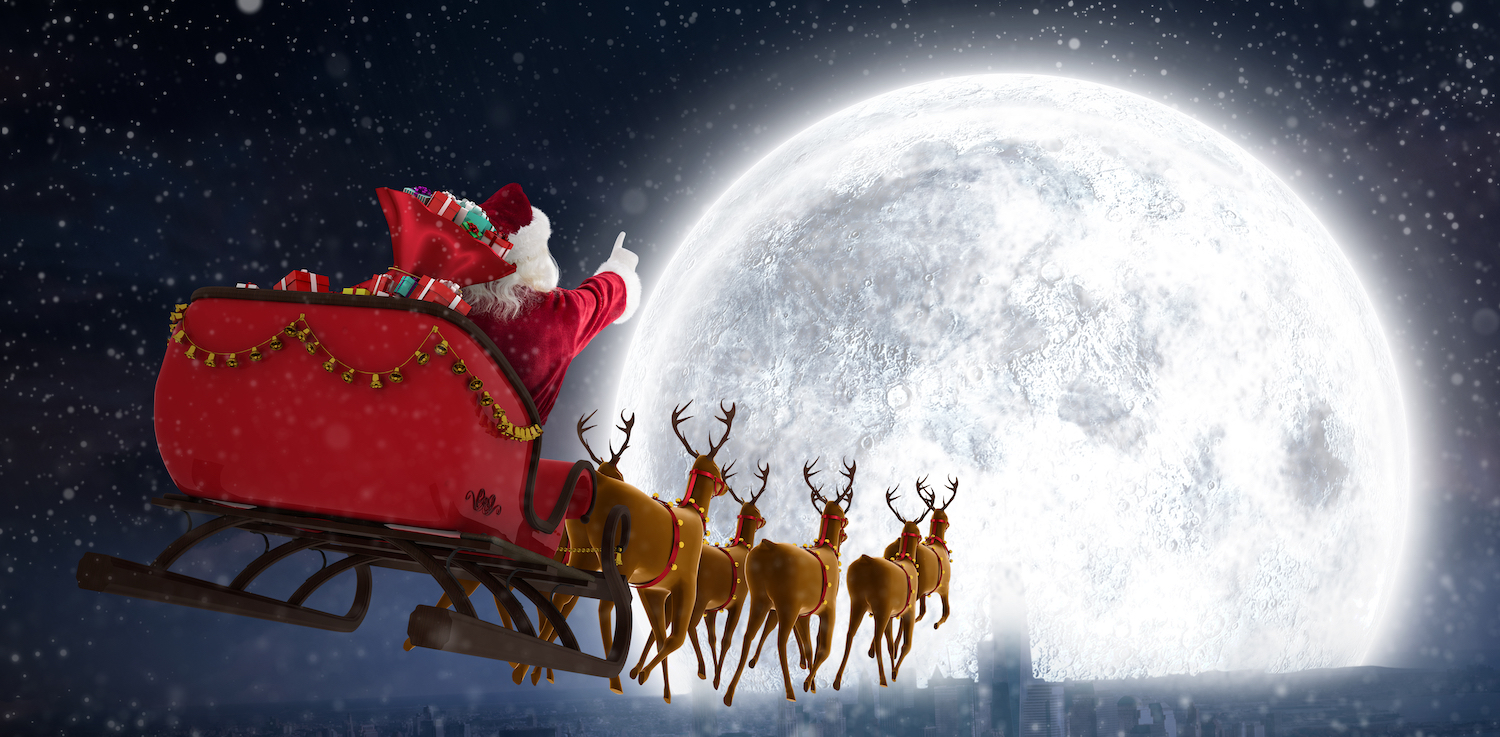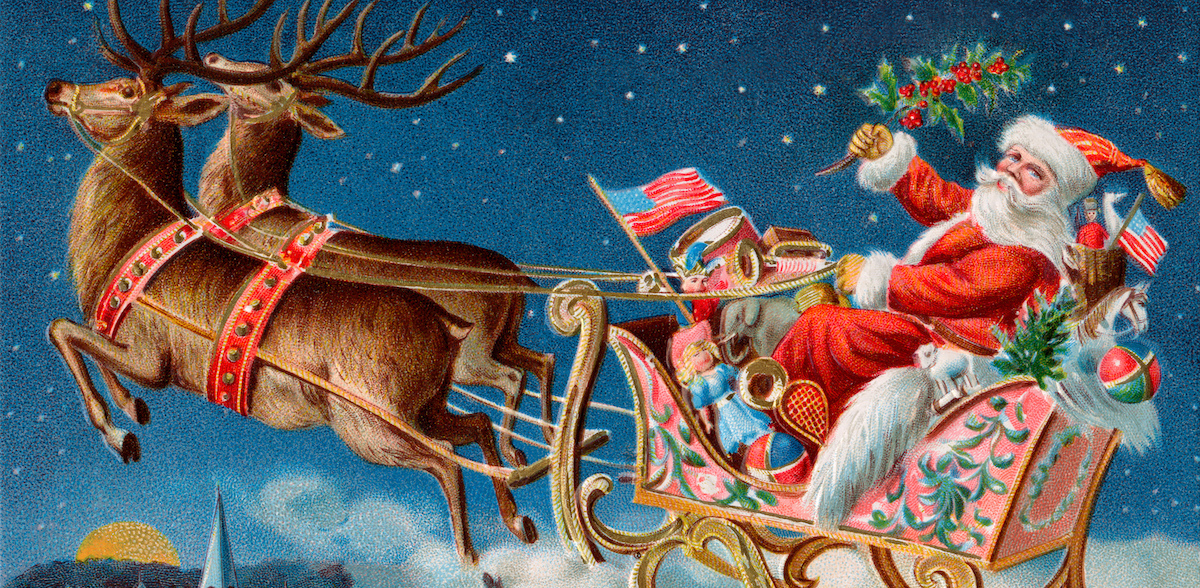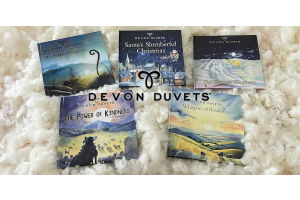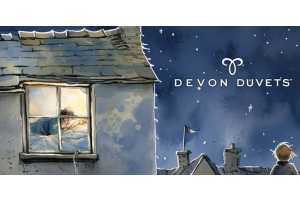
We all know him…he’s a jovial well-built fellow with a white beard, wears a red suit with white fur trimmings, and drives a sleigh drawn by reindeer. He also carries a large sack of presents and manages to get down chimneys, despite eating millions of cookies left out for him on his journey.
In the UK, he is known by two names – Father Christmas or Santa Claus – and will largely depend on your family traditions or the generation you belong to. In recent decades, however, Father Christmas and Santa Claus have become synonymous, although they were originally completely different figures, each with their own tradition and associated stories. Read on to find out more.
Who is Father Christmas?
The recognisably modern figure of Father Christmas dates to the late Victorian period in the UK, however he can be traced back centuries in English folklore and possibly even further back to pre-Christian midwinter celebrations. Although there is no written evidence of this, as with many older folklore tales, the figure of what became Father Christmas has his roots in ancient pagan traditions. He first appears in written historical records of the early Middle Ages in England, at around the time when the archaic word ‘Yule’ had been replaced by ‘Christmas’. Originally known as the ‘spirit of winter’, he was traditionally dressed in green with a winter foliage crown and brought cheer during the time of the longest nights. He also heralded the forthcoming change of seasons when the long hours of the night become shorter, and the daylight hours become longer. Some medieval traditions combined this spirit of winter with the popular Lord of Misrule, who would oversee games and the playing of tricks during the festive period. In Tudor and Stuart times he became known as ‘Sir Christmas’ or ‘Lord Christmas’ before eventually being called by his better-known name of Father Christmas.


When did Father Christmas become Santa Claus?
After a brief period of banishment, following the English Civil War, when the Puritan led government tried to abolish Christmas as being too ‘papist’, he was reinstated in the mid 17th century as the symbol of the good old days but was associated with adult feasting and merry making. He had no specific connection with children or the giving of presents. It wasn’t until the Victorian era of Christmas celebrations that he became a bringer of gifts in the UK. This was mainly due to the influence of the popular American character of Santa Claus that is attributed to Dutch mythology, and Father Christmas began to slowly take on similar attributes. Both names were used, and he was often illustrated wearing a white fur trimmed red gown.
By the early to mid-20th century in the UK, any residual distinctions between the two had faded away and now most people and modern dictionaries consider Father Christmas and Santa Claus to be the same. Although he is still known by both names, ‘Santa Claus’ is the most used. Interestingly, due to a more recent revival of traditional folklore plays and Yule activities, Father Christmas is still considered a distinctly different character and can occasionally still be seen dressed in green, with a winter foliage crown in recognition of the spirit of winter.


Who is Santa Claus?
The jolly, bearded fellow who flies around the world on Christmas Eve, delivering presents is Santa Claus. He is the traditional patron of Christmas in the USA and other countries and his gift giving aspect is associated with an early Christian saint, St Nicholas - who we’ll talk about in more detail later in this blog.
Who made the legend of Santa Claus popular?
The Dutch are credited with bringing the legend of St Nicholas (Sinterklaas in Dutch, and the origin of the words Santa Claus) to New Amsterdam (now New York), along with the custom of giving gifts and sweets to children on 6th December, his original feast day. A poem called ‘A Visit from St Nicholas’ (also known as ‘Twas the night before Christmas’) was published in 1823 and the description in the poem is said to be the inspiration behind American political cartoonist Thomas Nast’s series of images in Harper’s Weekly in 1863. Nast depicted Santa Claus dressed in red and carrying a bundle of presents. This image was further developed by images in Coca Cola advertisements from 1931 onwards, where he was show wearing a red suit, with a black belt, white fur trim and a soft red cap.


Now widely associated specifically with Christmas Eve, Santa Claus is said to live at the North Pole with his wife, where he makes toys for children, with the help of elves. He receives letters from children, asking for Christmas gifts, which he loads up onto his reindeer-drawn sleigh on Christmas Eve. Flying around the world, he slides down the chimney at each child’s house to deliver a present. There is also a tradition is to leave milk and cookies for Santa, so that he can refresh himself, plus a carrot or two for his reindeer. Follow Santa Claus and his journey on Christmas Eve.
Who is Saint Nicholas?
We can’t really talk about Santa Claus without mentioning St Nicholas who is believed to be behind the later Santa Claus mythology. Although there are no remaining historical documents about his life, it is likely that in the 4th century AD, he was the Bishop of Myra - a city in ancient Lycia, located on the Mediterranean, in what is now southwest Turkey. He is thought to have travelled to Egypt and Palestine and was tortured during the persecution of Christians by the Roman Emperor, Diocletian before being released by Constantine the Great. He may have even attended the first Council of Nicaea in 325AD where certain Christian doctrines were debated and adopted. The date of 25th December, chosen to celebrate Christmas in western Christianity, was adopted in 336AD and was superimposed over the pagan holidays of the time.


What is the connection between Saint Nicholas and gift giving?
St Nicholas’s reputation for generosity and kindness gave rise to legends of miracles. For example, he was credited with giving marriage dowries of gold to three girls whose poverty would have forced them into becoming concubines, and restored life to three children who had been killed. This gave rise to the later tradition of the gift bearing Santa Claus.
After his death, St Nicholas was buried in his church at Myra but in the Middle Ages his alleged remains were stolen and taken to the basilica in Bari, Italy, which increased his popularity in Europe and created one of the most popular pilgrimage sites. Thousands of European churches were dedicated to him including in Russia, Greece and across Europe but after the Reformation devotion to St Nicholas nearly all disappeared in the Protestant countries of Europe, except for The Netherlands. The feast day of St Nicholas or Sinterklaas is still celebrated in early December in The Netherlands, Belgium and parts of Germany, France and Hungary.


Give the gift of sleep this Christmas by choosing one of our individually handcrafted, wool duvets. Stitched with love for blissful slumber! If you would like any information or help in choosing your duvet, please contact the team, who’ll be happy to help.
Ref: Wikipedia, Britannica.com, whychristmas.com







